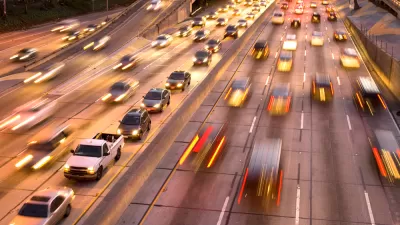How can planners approach the emotions and psychology of urban stakeholders? Planning journalist Josh Stephens speaks with Psychology Today to give psychology professionals a glimpse into how planners think.

"Kids don’t question whether their environment is ideal or whether it was built for the right reasons any more than they question whether their native language or their religion is ideal. Our places are built into us and they influence us so powerfully that we don’t even know they’re influencing us. And hometowns aren’t just buildings and streets. They are also cultural norms: values, customs, ideas, styles, ideologies, and relationships. We approach the rest of the world according to those cultural norms."
"YIMBYism also provides a crucial counterweight to the power of homeowners, which has accumulated unchallenged for decades. Homeowners dominate urban politics because they are relatively sedentary, relatively wealthy, and relatively white (and often benefited from zoning laws and patterns that favor whiteness). They have financial, aesthetic, and sometimes racially motivated interests in maintaining the status quo—meaning under-production of housing. They are the ones who have traditionally dominated public discourse."
FULL STORY: The Psychology of The Urban Mystique

Planetizen Federal Action Tracker
A weekly monitor of how Trump’s orders and actions are impacting planners and planning in America.

DARTSpace Platform Streamlines Dallas TOD Application Process
The Dallas transit agency hopes a shorter permitting timeline will boost transit-oriented development around rail stations.

Congressman Proposes Bill to Rename DC Metro “Trump Train”
The Make Autorail Great Again Act would withhold federal funding to the system until the Washington Metropolitan Area Transit Authority (WMATA), rebrands as the Washington Metropolitan Authority for Greater Access (WMAGA).

Supreme Court Ruling in Pipeline Case Guts Federal Environmental Law
The decision limits the scope of a federal law that mandates extensive environmental impact reviews of energy, infrastructure, and transportation projects.

Texas State Bills to Defund Dallas Transit Die
DART would have seen a 30% service cut, $230M annual losses had the bills survived.

Bikeshare for the Win: Team Pedals to London Cricket Match, Beats Rivals Stuck in Traffic
While their opponents sat in gridlock, England's national cricket team hopped Lime bikes, riding to a 3-0 victory.
Urban Design for Planners 1: Software Tools
This six-course series explores essential urban design concepts using open source software and equips planners with the tools they need to participate fully in the urban design process.
Planning for Universal Design
Learn the tools for implementing Universal Design in planning regulations.
Roanoke Valley-Alleghany Regional Commission
City of Mt Shasta
City of Camden Redevelopment Agency
City of Astoria
Transportation Research & Education Center (TREC) at Portland State University
US High Speed Rail Association
City of Camden Redevelopment Agency
Municipality of Princeton (NJ)





























